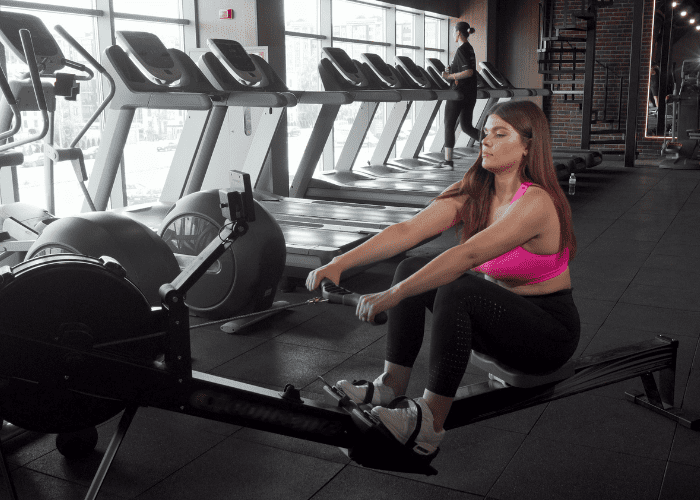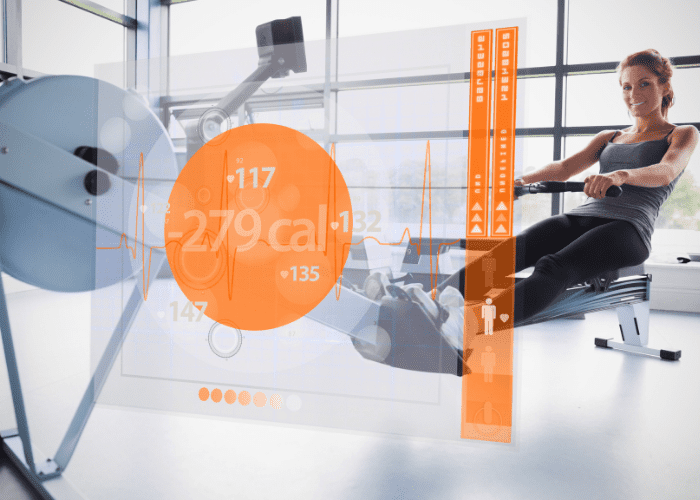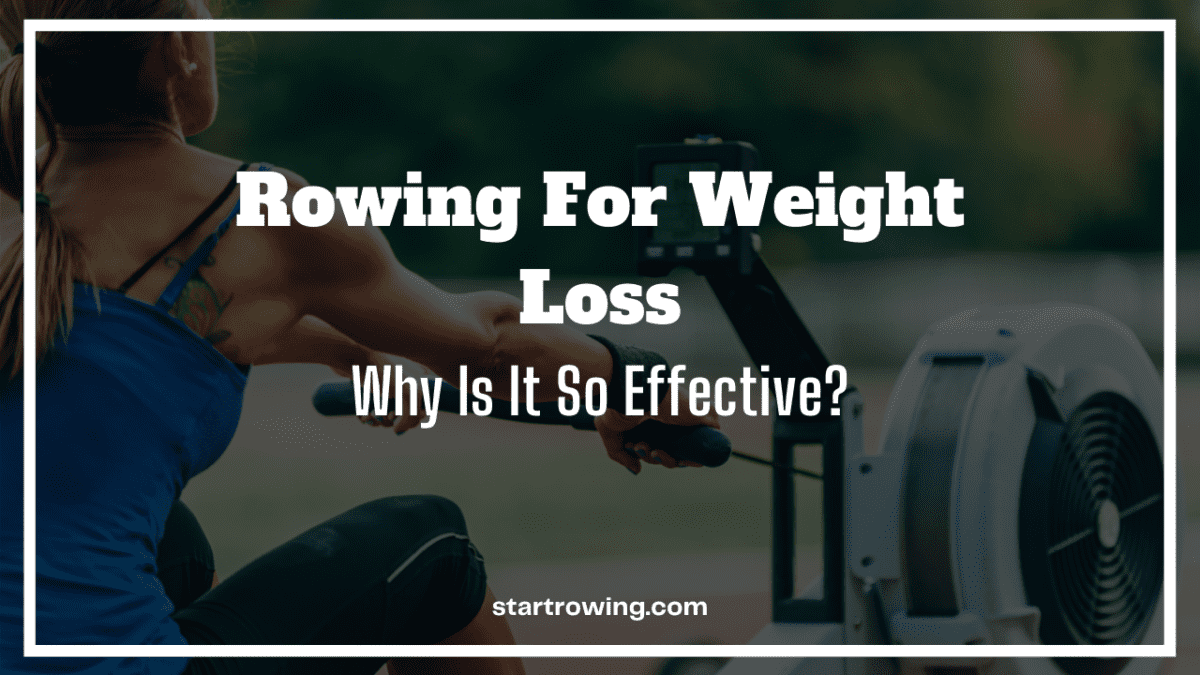A large percentage of the world’s population is overweight. Being significantly overweight can reduce life expectancy, increase the risk of developing chronic diseases such as diabetes and coronary heart disease, reduce the quality of life, and is one of the leading causes of work absenteeism and depression.
As many of us are far more sedentary than we should be, it’s clear that exercise is going to be an important part of losing or controlling weight. But what sort of exercise is best? In this article, I’d like to argue the case for rowing for weight loss!
Why Should You Use A Rowing Machine For Weight Loss?
You’ll find a rowing machine in most gyms and there are several very good models that are designed specifically for home use. The technique of rowing is quickly learned and as workouts go, rowing is one of the most effective and efficient.
Rowing offers several benefits to the overweight exerciser looking to shed some pounds.

Rowing is easy on your joints
As a non-weight bearing activity, rowing is easy on your joints – much easier than running for example. When you run, as much as three times your bodyweight comes crashing down each and every step, and that, if you are overweight or just a little on the heavy side, is a lot of stress on your feet, ankles, knees, hips, and spine.
Also, as a high-impact activity, your internal organs and body, in general, are exposed to a lot of deceleration trauma which, again, will be anything but comfortable if you are overweight. If an exercise regime is going to be effective, you need to be a) comfortable and b) able to stick to it so for heavier people looking for weight loss, running is out and rowing is in.
Rowing burns calories and fat
Rowing is an extremely effective method of burning calories and fat to lose weight and build muscle tone. Rowing uses virtually every muscle in your body. These muscles must be supplied with copious amounts of oxygen which ensures your heart and lungs get a good workout and also results in a lot of calories being used.
A typical 200lb person rowing at a moderate pace for 20-minutes will burn approximately 224-calories which compares very favorably to all other forms of cardio exercise. A similar workout on a stepper, for example, only uses approximately 192-calories.
Not only is rowing a full-body workout, but it provides two different methods of cardio exercise to achieve optimal fat burning. The first is known as steady-state, where you row at a consistent pace with a consistent resistance for a set amount of time.
The second is known as high-intensity interval training (HIIT), where you row at a more intense pace for a set time, rest, and keep repeating that cycle.
HIIT exercises get your heart rate up through intensity and speed, and then keep your body working harder post-workout in order to fully recover.
Incorporating both of these cardio methods into your rowing workouts will get your body burning fat and calories to help reach your weight loss goal much quicker than a standard cardio workout would.
Between steady-state and HIIT rowing and a well-balanced diet, weight loss will come easier as you get into a consistent routine.
Burning Calories in a Rowing Workout

For those who use rowing as a fat-burning exercise, many factors contribute to the number of calories burned in a rowing workout.
These factors include:
- Your age and weight
- The intensity of the workout performed
- Your body composition (fat to muscle ratio)
- Your basal metabolic rate (the number of calories you burn while performing basic life functions)
Harvard Health says that a 155-pound person rowing at a moderate speed for 30 minutes can burn 252 calories. A 185-pound person rowing at the same speed for the same time can burn 294 calories.
As you can see from those numbers, the more you weigh, the more you burn while doing any physical activity.
Calculating Calories Burned in a Rowing Workout
There are numerous fitness calculators online that can help you determine the number of calories you burned in a workout. Just know that the majority of these calculators require you to track your heart rate during exercise in order to accurately report on calories burned.
Many rowers (particularly the higher quality machines) like the CITYROW GO Max include a touchscreen monitor that tracks all the metrics you need to determine the calories burned in a workout.
Rowing machine calorie calculator
If you’d rather calculate the calories yourself, here are the formulas for men and women.
| Men’s Formula |
| Calories Burned = [(Age x 0.2017) – (Weight x 0.09036) + (Heart Rate x 0.6309) – 55.0969] x Time / 4.184 |
| Women’s Formula |
| Calories Burned = [(Age x 0.074) – (Weight x 0.05741) + (Heart Rate x 0.4472) – 20.4022] x Time / 4.184 |
Rowing works your anti-gravity muscles
Rowing places an emphasis on the muscles of your lower and upper back as well as your glutes or butt. These muscles are responsible for holding your body upright against gravity.
Because most people tend to hold excess weight around their abdomen and at the front of their bodies, these posterior muscles are under a lot of strain. Rowing will help strengthen these muscles which will help relieve back pain and improve posture – two things frequently associated with being overweight.
Rowing Workouts are scalable
Although not always the case, overweight people are generally quite unfit. Rowing workouts can easily be adapted to suit even the rawest of beginners. By simply pulling less vigorously and at a slower tempo, you can make a rowing workout much less demanding and more appropriate for an unfit exerciser.
Seated exercise is more comfortable
Being significantly overweight means your legs have to do a lot more work than normal.
Walking, running, or using a cross-trainer can be prohibitively difficult for many overweight exercisers.
As rowing is done sat down, excess bodyweight becomes less of a fatiguing factor which means that exercise can be sustained for longer and more comfortably.
Make Sure To Combine Rowing With A Healthy Diet
Combined with a sensible diet, rowing can help you lose weight and then keep it off (with the right macronutrient breakdown for weight loss).
Don’t try and lose weight too fast though – you’ll just end up tired and hungry and probably fall off the diet wagon all too soon. Instead, be patient, focus on long-term nutritional changes rather than fad diets and inject regular physical activity into your daily routine.
Don’t do too much too soon but, instead, start off with short workouts and gradually increase both duration and intensity as you get fitter. Rowing is the ideal exercise for sustainable weight loss so stop reading and get rowing.
Rowing Workout For Weight Loss (Example)
Here is a workout you can try to get started with your weight loss program. You can increase or decrease your stroke rate to vary the intensity of the workout.



